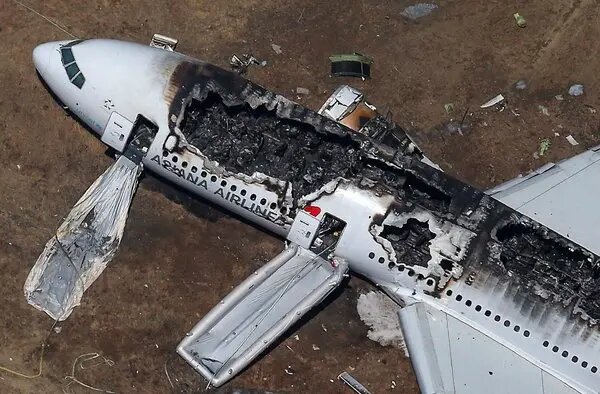Pilot blamed for plane crash that killed former OU quarterback Steve Davis
In February 2013, legendary Sooner quarterback Steve Davis was looking for airplane pilots willing to help out charities.
That’s why he became reacquainted with Tulsa businessman and pilot Wesley Caves, years after they first met while at the University of Oklahoma.

Their renewed friendship led to Davis joining Caves for a flight on March 17, 2013, from Tulsa to South Bend, Ind. Both died when the twin-engine Beechcraft Premier 1 business jet crashed into a neighborhood after losing power on approach. Two passengers on the plane and a person on the ground were injured.
In their final report on the accident, federal investigators have determined the pilot, Caves, 58, is to blame.
The National Transportation Safety Board determined the pilot’s first mistake was allowing an unqualified passenger, Davis, to be at the controls as they descended to land.
Davis inadvertently shut off both engines as he slowed the jet down about 18 miles from the South Bend airport. “Uh-oh,” the pilot said, according to a cockpit recorder.
“What?” Davis said.
“You went back behind the stops and we lost power,” Caves said. “We are dead stick.”
The NTSB reported the pilot’s next mistake was to respond inadequately to the engine shutdown, “including his failure to adhere to procedures.”
Caves was attempting to land the plane on a runway but pulled up without touching because an air traffic controller told him the main landing gear was not down, according to the NTSB report.
On the second landing attempt, he did put the plane down on the runway even though, again, only the nose gear was down. Witnesses reported the plane bounced on the runway before climbing again and then crashing.
Investigators concluded Caves had restarted one engine but did not follow procedures that would have allowed the landing gear to go down normally.
Specifically, investigators reported, the battery toggle switch was found to be in a standby position. Also, a backup, a handle that lowers the main landing gear, was only partially extended.
“The investigation determined that it is likely the pilot did not fully extend the handle to obtain a full landing gear deployment. Had he fully extended the landing gear, a successful single-engine landing could have been accomplished,” the report said.
The final report was released Thursday.
One passenger, Christopher Evans, recalled the plane bouncing four times on the second landing attempt before banking right, according to his statement to the NTSB. After that, “things got hairy,” he said.
“He stated that he was looking out the window to the right and could see the rooftops of houses and then he ‘blacked out,’” records show.
Davis was the quarterback on OU’s 1974 and 1975 national championship teams. During his career as a Sooner, Davis went 32-1-1. He was 60 when he died. He had a private pilot certificate but his last recorded flight was in 2008.
The plane was registered to 7700 Enterprises of Montana, LLC, and operated by DigiCut Systems of Tulsa, records show. Caves owned DigiCut Systems, starting it in 1998.

Shortly after they became reacquainted, Davis and Caves worked together to plan a Fellowship of Christian Athletes’ luncheon, which included flying to Memphis to pick up the event speaker, according to Caves’ son, Travis Caves.
“Both enjoyed talking about airplanes and flying,” the son told investigators. “On March 17, 2013, Steve Davis accompanied Wes Caves on the trip to South Bend … because … (they) shared a common interest in flying.”
The pilot’s widow and both passengers, Evans, and Jim Rodgers, a retired Tulsa firefighter, filed federal lawsuits after the crash against Beechcraft Corp. and Hawker Beechcraft Global Customer Support LLC.
Leave a Reply